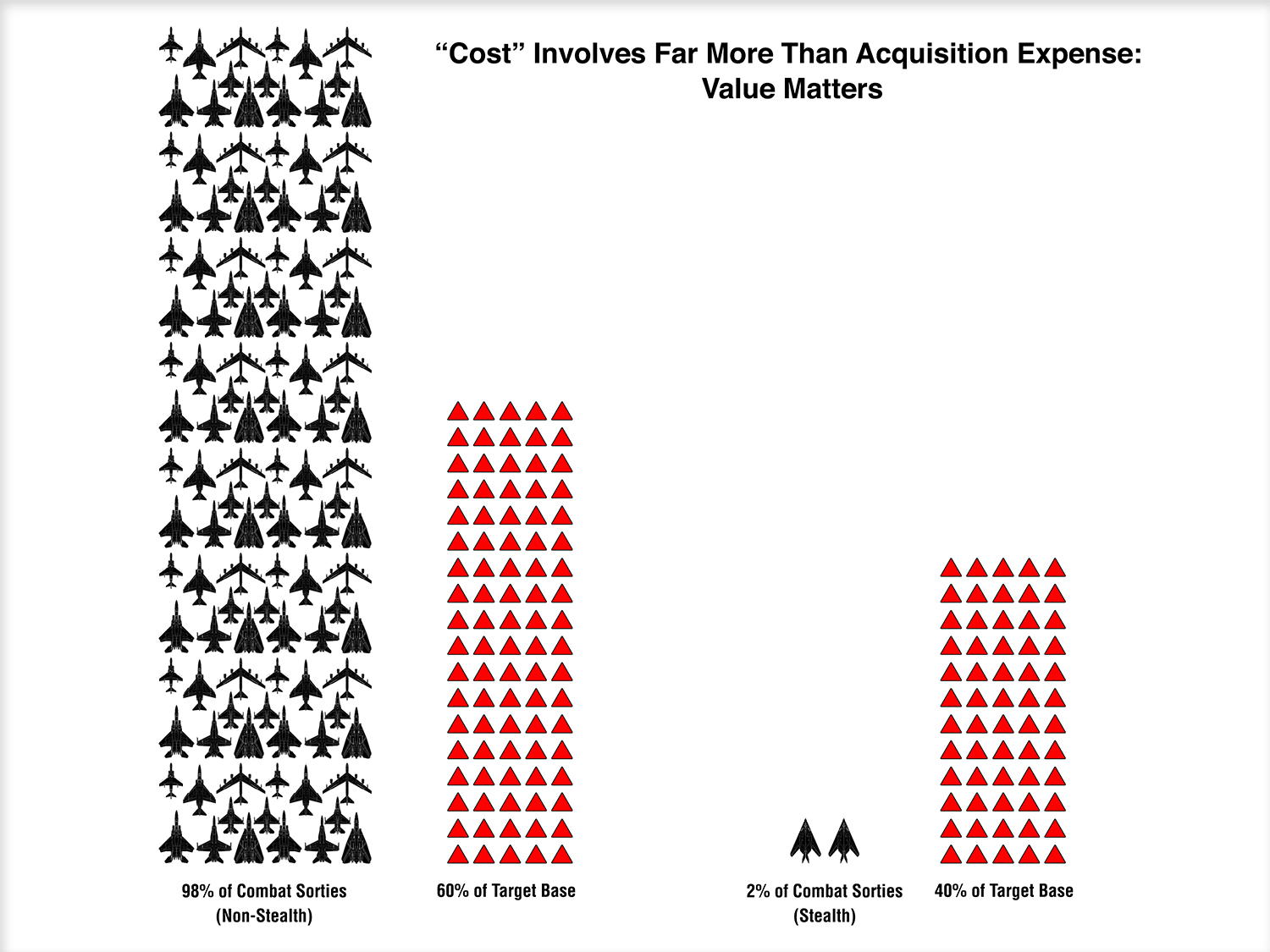Defense Spending in Perspective
When the subject of federal spending is discussed, the defense budget is often cited as a leading expenditure source. However, this is an inaccurate statement. Entitlement spending has been vastly outpacing defense allocations for years by a wide margin. In 2018, defense spending was 3.1 percent of US gross domestic product, while entitlements stood at 12.1 percent, nearly four-fold imbalance. Projections suggest this gap may widen in the future given demographic trends and existing policies. When the growing federal deficit is added to the equation, defense spending stands at risk—a troubling potential given the burgeoning threat environment.
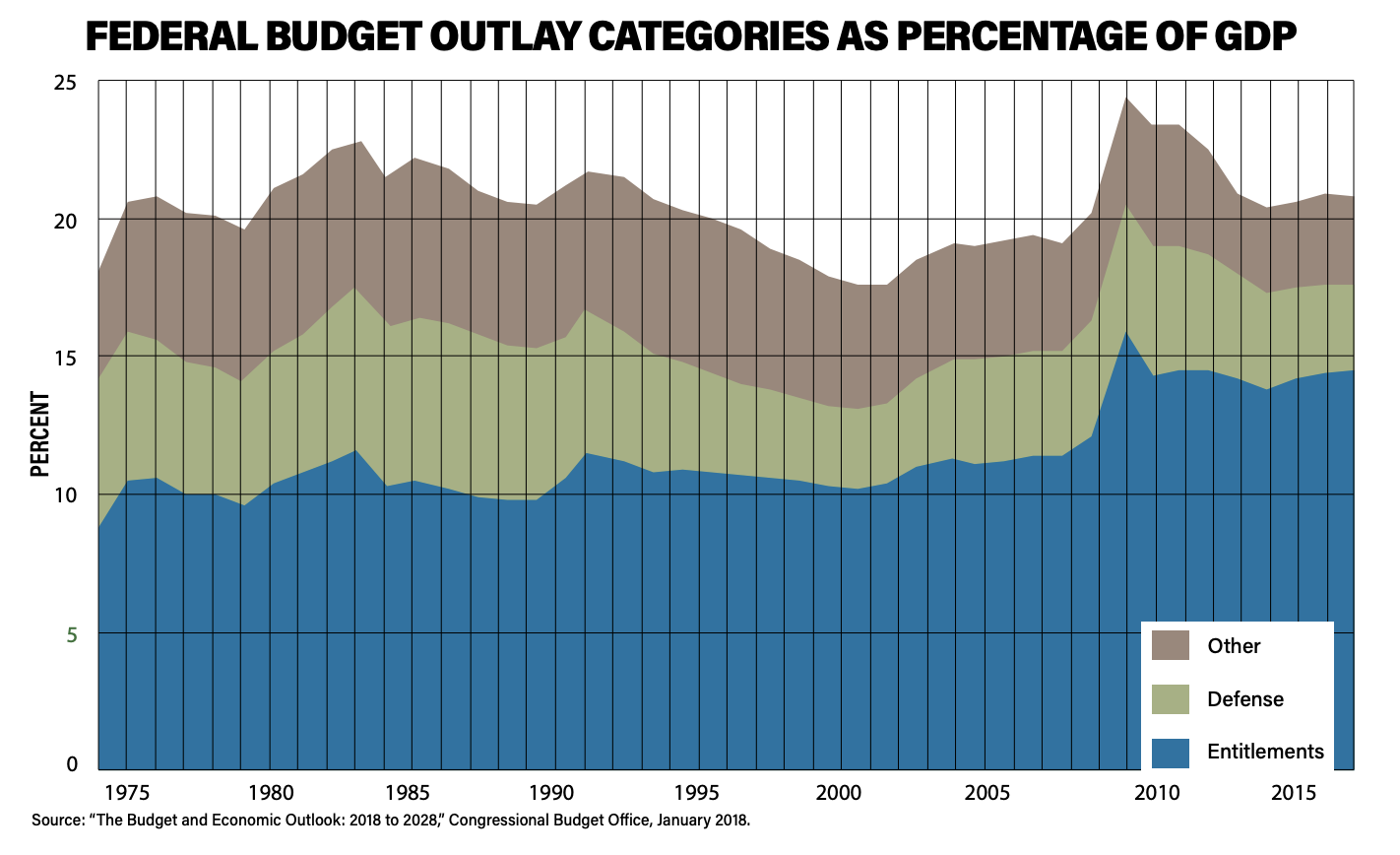
Present defense spending, as viewed by historic norms in relation to GDP, is at a near record low level. Previous eras involving significant national security challenges saw defense spending at rates at least twice as high as today’s expenditures. Given the timelines required to reset today’s small, old aerospace capabilities, resources must be aggressively increased to acquire the forces that will be required to fight and win in the future.
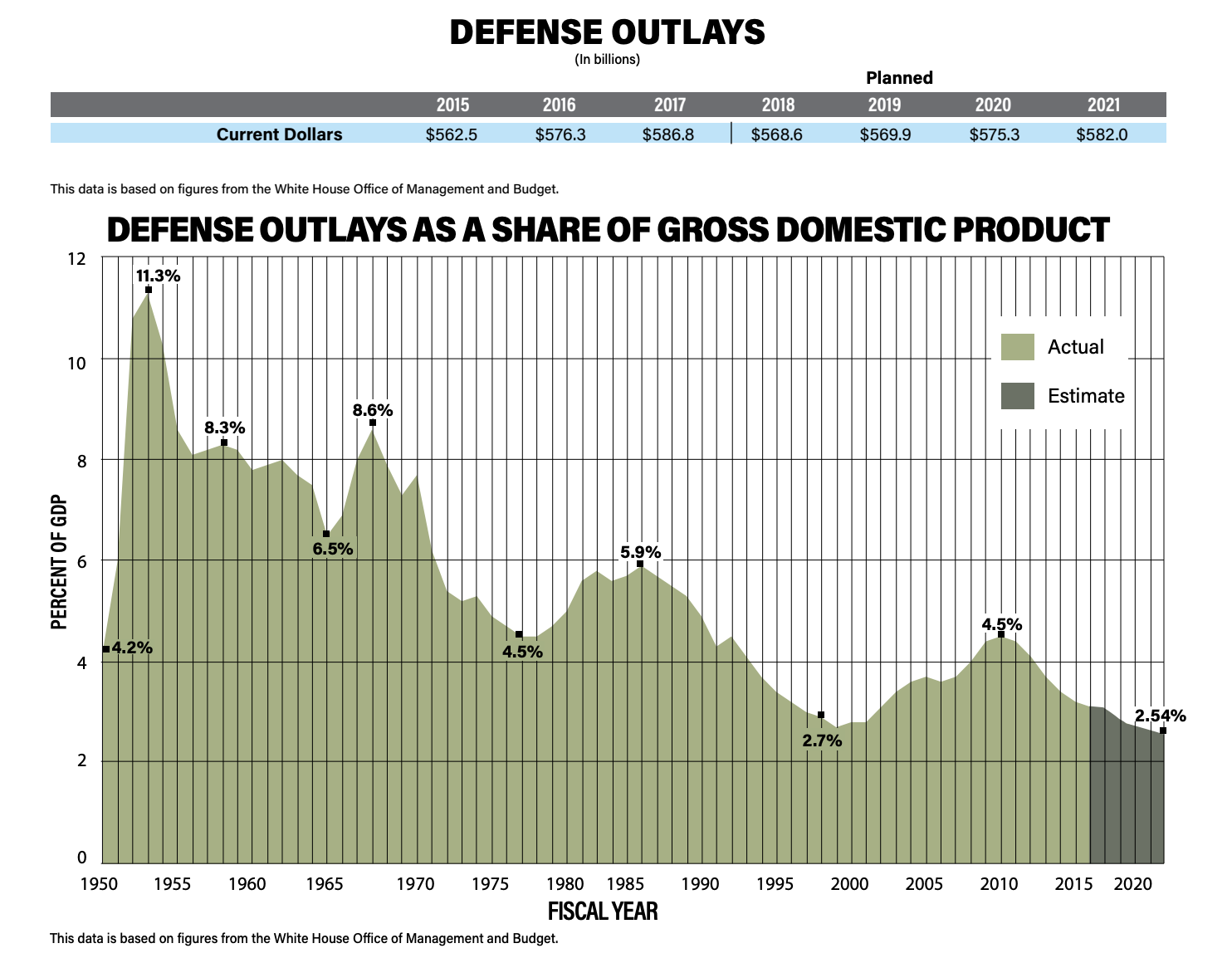
An Air Force Smaller and Older Than Ever Before
The Air Force is flying the smallest, oldest aircraft fleet in its history—a troubling reality given the increasingly dangerous threat environment.
Airmen are stretched thin addressing non-state actors such as the Islamic State, Al Qaeda, the Taliban, and Al Shabab; regional adversaries like Iran and North Korea; as well as the growing threat posed by Russia and China.
Airmen are stretched thin addressing non-state actors such as the Islamic State, Al Qaeda, the Taliban, and Al Shabab; regional adversaries like Iran and North Korea; as well as the growing threat posed by Russia and China.
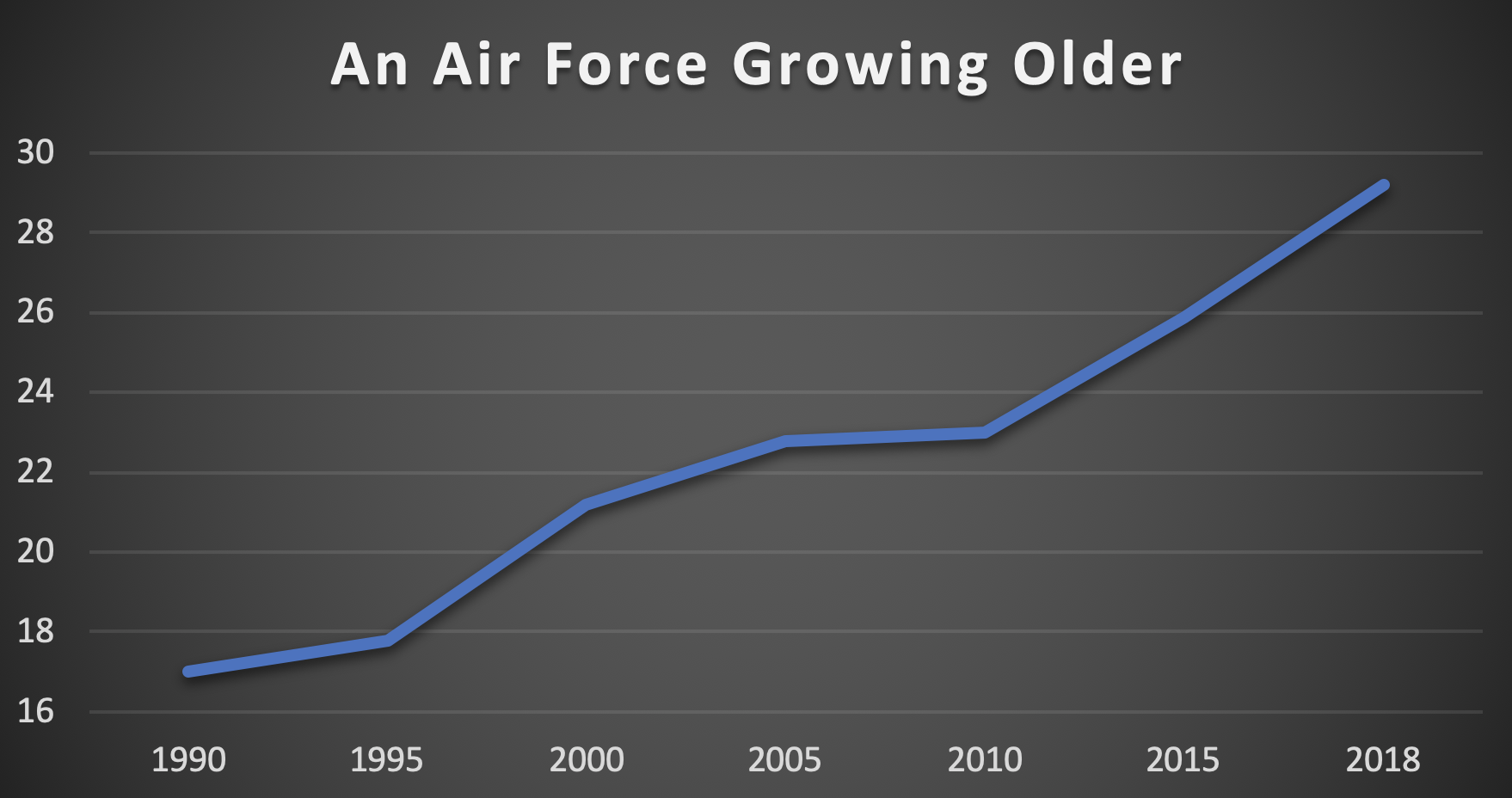
This demands a robust, credible, and consistent US presence to deter further aggression, reassure allies, and project decisive combat power should circumstance warrant. This range of threats and strategic challenges demand both capability and capacity.
This demands a robust, credible, and consistent US presence to deter further aggression, reassure allies, and project decisive combat power should circumstance warrant. This range of threats and strategic challenges demand both capability and capacity.

It is obvious to nefarious actors when United States military forces are spread thin—185 F-22s and 20 B-2s can only be in so many places at a given time. Russia’s recent actions in Syria and Ukraine present a good example regarding the capacity challenges US commanders would face if operations in both regions escalated concurrently.
It is obvious to nefarious actors when United States military forces are spread thin—185 F-22s and 20 B-2s can only be in so many places at a given time. Russia’s recent actions in Syria and Ukraine present a good example regarding the capacity challenges US commanders would face if operations in both regions escalated concurrently.

Both involved sophisticated threats, requiring the most advanced US aerospace systems. Lacking the means to engage in concurrent contingencies, the US would either have to withdraw forces from one zone, ceding its interests in Syria, or not engage in Ukraine.
Both involved sophisticated threats, requiring the most advanced US aerospace systems. Lacking the means to engage in concurrent contingencies, the US would either have to withdraw forces from one zone, ceding its interests in Syria, or not engage in Ukraine.

Either course would damage US interests and severely harm its overarching credibility. The Russian government would act as the driver in that sort of scenario, with the United States in a reactive position—a bad strategic posture for America.
Either course would damage US interests and severely harm its overarching credibility. The Russian government would act as the driver in that sort of scenario, with the United States in a reactive position—a bad strategic posture for America.

By building a broader reserve of capabilities, the US is better able to mitigate such risks, and adversaries are less likely to press the limits of aggressive behavior if they know they will face painful repercussions.
By building a broader reserve of capabilities, the US is better able to mitigate such risks, and adversaries are less likely to press the limits of aggressive behavior if they know they will face painful repercussions.

A Failure to Modernize
At the end of the Cold War, the US Air Force procurement budgets were dramatically curtailed. Programs like the B-2 stealth bomber were canceled, with a mere 21 aircraft produced instead of the 132 planned. Legacy aircraft like the B-52G, F-111, F-4s, and C-141s were all retired, while fleets of F-16s, F-15s, A-10s, B-1s, and B-52s were reduced in scope. At the same time, mission demand began to increase. Operation Desert Storm yielded Operations Northern Watch and Southern Watch for nearly a decade. Air campaigns in Bosnia and Kosovo also taxed available forces. With the launch of Operations Enduring Freedom and Iraqi Freedom in the wake of 9/11, aircraft faced exceedingly high combat utilization rates. This spike in demand was not met with an appropriate increase in resources. The preponderance of wartime resources were directed to the ground component, which led to the premature cessation of programs like the C-17 and F-22. Air Force leaders were forced to retire over 200 combat aircraft to free up resources to fund near-term priorities stretched thin by the strain of combat. These aircraft were never backfilled, and the existing force was flown even harder.
The anemic level of the Air Force’s aircraft procurement efforts can best be understood when compared to those of the US Navy. For the past decade, despite the far larger size of the Air Force and its broader set of mission responsibilities, it has purchased fewer aircraft than its sister service. This is not a criticism of the Navy, but instead a warning about the need to boost acquisition of aircraft like the F-35, B-21, KC-46, T-X, UH-1 replacement helicopter, etc. Failing to secure these buys in a timely fashion will drive existing assets into the ground and risk even more serious capability gaps.
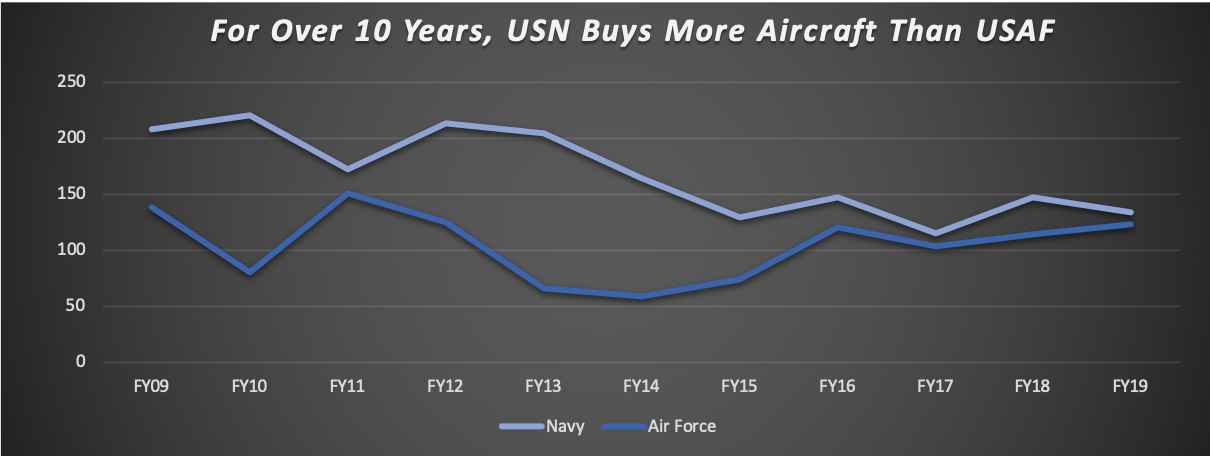
Understanding the True Nature of Cost
Quite often, individuals fixate on how much it costs to buy a new aircraft are space system. They question why some aircraft seem expensive, while other less advanced systems are cheaper to acquire. The problem with these conversations is that they usually occur without discussing the notion of value. If a small number of seemingly “expensive” aircraft can achieve what it would take dozens of “cheaper” aircraft to accomplish, than the airplane with the higher acquisition cost is less expensive over the long term.
Quite often, individuals fixate on how much it costs to buy a new aircraft are space system. They question why some aircraft seem expensive, while other less advanced systems are cheaper to acquire. The problem with these conversations is that they usually occur without discussing the notion of value. If a small number of seemingly “expensive” aircraft can achieve what it would take dozens of “cheaper” aircraft to accomplish, than the airplane with the higher acquisition cost is less expensive over the long term.
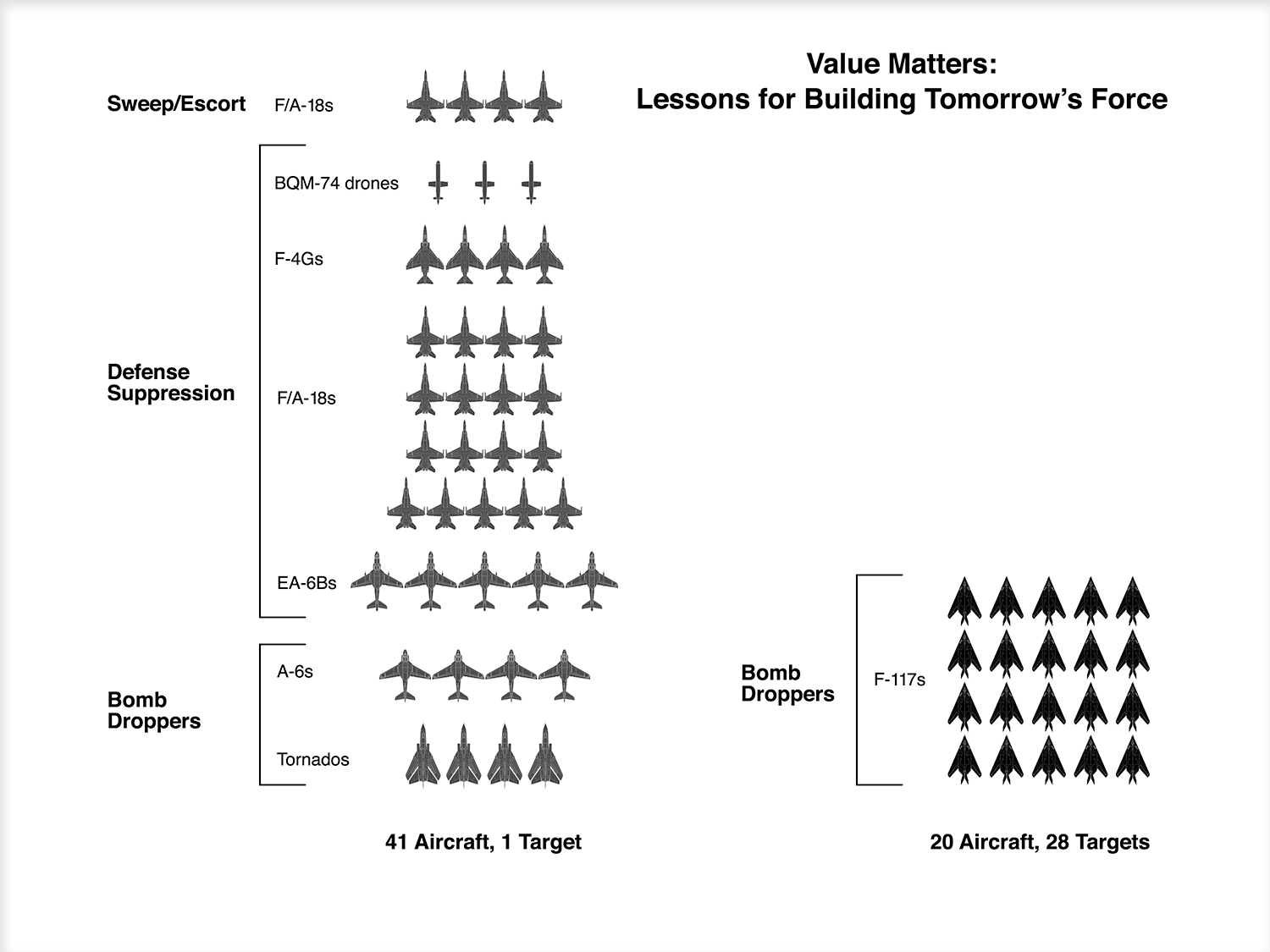
For example, in Operation Desert Storm, a handful of F-117 stealth fighters were able to accomplish disproportionality more than their legacy counterparts thanks to advances in stealth and precision guided weapons. Not only did it cost more to buy numerous less sophisticated aircraft, but operating them and sustaining them also drove higher costs. When looking at building tomorrow’s Air Force, it is crucial to assess an air or space craft’s relative value. That’s why aircraft like the F-35, B-21 and KC-46 are prudent investments—they yield a very high return per given airplane.
For example, in Operation Desert Storm, a handful of F-117 stealth fighters were able to accomplish disproportionality more than their legacy counterparts thanks to advances in stealth and precision guided weapons. Not only did it cost more to buy numerous less sophisticated aircraft, but operating them and sustaining them also drove higher costs. When looking at building tomorrow’s Air Force, it is crucial to assess an air or space craft’s relative value. That’s why aircraft like the F-35, B-21 and KC-46 are prudent investments—they yield a very high return per given airplane.
